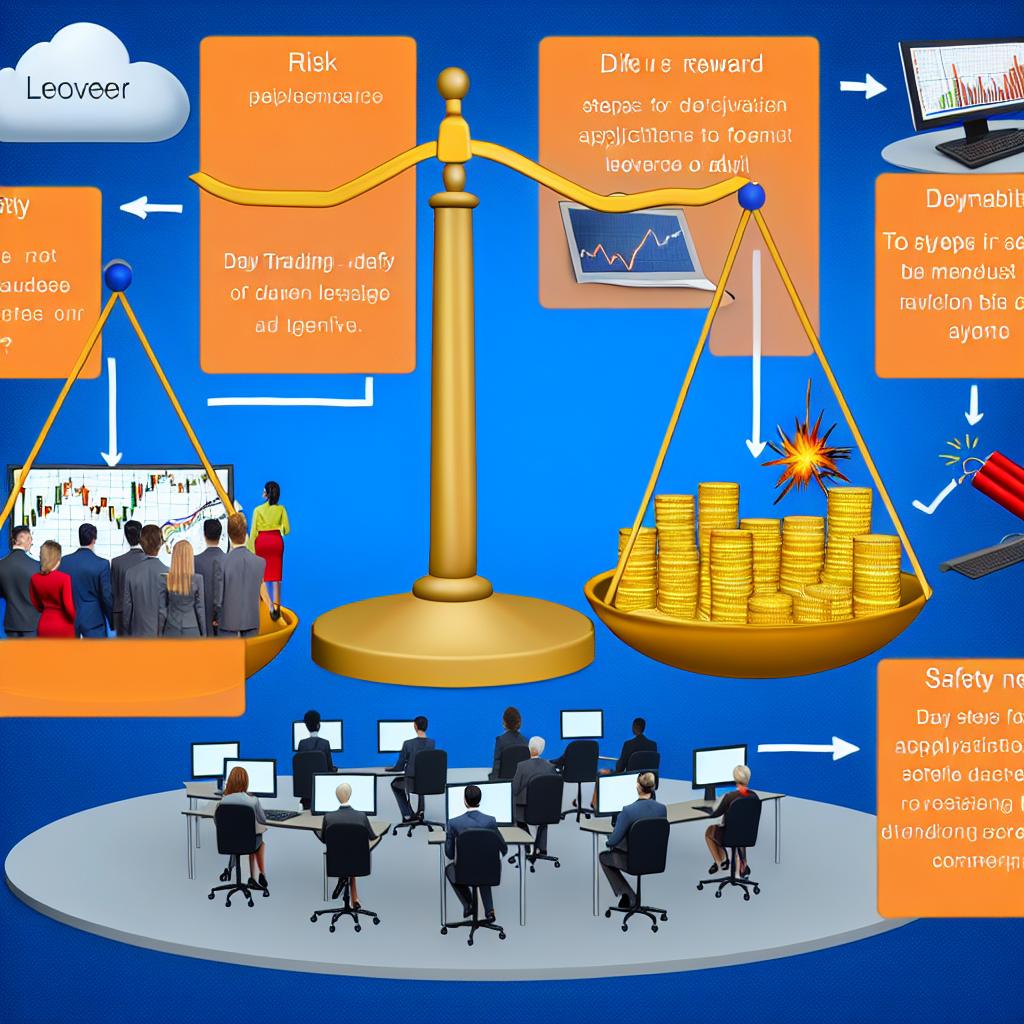Understanding Leverage in Day Trading
In the dynamic realm of day trading, the concept of leverage stands out as a significant component that traders must grasp before engaging in the market. Leverage offers the opportunity to magnify potential returns by allowing traders to control larger positions than their actual capital would permit. This financial tool can indeed be a double-edged sword, offering the chance for substantial gains alongside the risk of elevated losses. In order to use leverage effectively, a comprehensive understanding of its mechanics and the associated risks is crucial.
How Leverage Works
At its core, leverage is a financial technique that enables traders to amplify their trade positions without the need to commit the full value of the position upfront. It is typically represented as a ratio, such as 5:1 or 10:1. To illustrate, a leverage of 10:1 indicates that with each dollar of capital invested, the trader gains control over ten dollars of a particular financial asset. This magnification of position size can enhance potential returns significantly, but it also increases exposure to risk. Hence, a fundamental understanding of the dynamics of leverage is indispensable for any trader seeking to navigate the volatile waters of day trading.
Types of Leverage
Different financial markets offer leverage in varying forms, tailored to their unique characteristics. In the realm of equities, for instance, traders often access leverage through margin accounts. This involves borrowing funds from a brokerage to purchase stocks, effectively magnifying potential gains based on the equity held in the account. Conversely, in the forex market, leverage tends to be much higher due to the market’s inherent high liquidity and continuous operation. Forex brokers commonly offer leverage ratios that can go up to 100:1 or even more, given the 24-hour nature and liquidity of the currency market. Meanwhile, futures trading presents another avenue for leverage, allowing traders to control large amounts of commodities, indices, or other financial instruments with minimal initial outlay.
Risk Management Strategies
To safely employ leverage, stringent risk management strategies are vital. Implementing these strategies helps mitigate the risks posed by leverage, thereby safeguarding the trader’s capital.
**Set Stop-Loss Orders:** Utilizing stop-loss orders is a critical technique in risk management. A stop-loss order automatically liquidates a position once it hits a specified price threshold. This protective measure serves to limit potential losses and protects the trader from situations where the market moves unfavorably fast.
**Limit Leverage Ratio:** Prudence dictates the use of a conservative leverage ratio, especially for traders new to the market. By starting with a lower leverage ratio and gradually increasing it as experience and confidence build, traders can manage risks more effectively. This cautious approach minimizes the impact of potential adverse market movements.
**Stay Informed:** Maintaining an informed perspective is another cornerstone of effective risk management. Continually updating one’s knowledge with current market news, trends, and events that could impact trading positions is crucial. This proactive stance allows traders to make informed and timely decisions that align with the evolving market landscape.
Monitor Leverage Use
A disciplined approach to monitoring leverage is essential in day trading. Frequent reviews of positions and the extent of leverage used allow traders to adjust their strategies based on their individual risk tolerance and prevailing market conditions. By consistently evaluating leverage use, traders can ensure that their strategies remain in line with their financial goals and risk management frameworks.
Education and Practice
Before venturing into live trading with leverage, thorough preparation through education and practice can make a significant difference. Leverage is a complex tool that requires a solid understanding of both its benefits and drawbacks. Engaging in a trading course tailored toward leverage and risk management can provide invaluable insights into the subtleties of this financial instrument. Moreover, practicing in a simulated trading environment helps in honing the skills necessary to navigate leverage without exposing real capital to risks. This hands-on experience enables traders to develop confidence and cultivate an approach that balances risk and reward adeptly.
Conclusion
In conclusion, leveraging in day trading serves as a potent mechanism that can significantly impact trading strategies and outcomes. It allows traders to control larger positions and potentially achieve greater profits. However, this potential comes at the cost of increased exposure to risk. The judicious use of leverage is crucial, emphasizing the need for a robust understanding of its workings, the potential financial implications, and adherence to strict risk management practices. By embracing a diligent and informed approach, traders can harness the power of leverage to optimize their trading endeavors effectively. Successfully navigating the challenges posed by leverage requires continuous education, practice, and a mindful strategy that aligns with individual risk tolerance levels. By mastering these aspects, traders can turn leverage from a daunting tool into a cornerstone of their successful trading journey.
This article was last updated on: April 14, 2025


